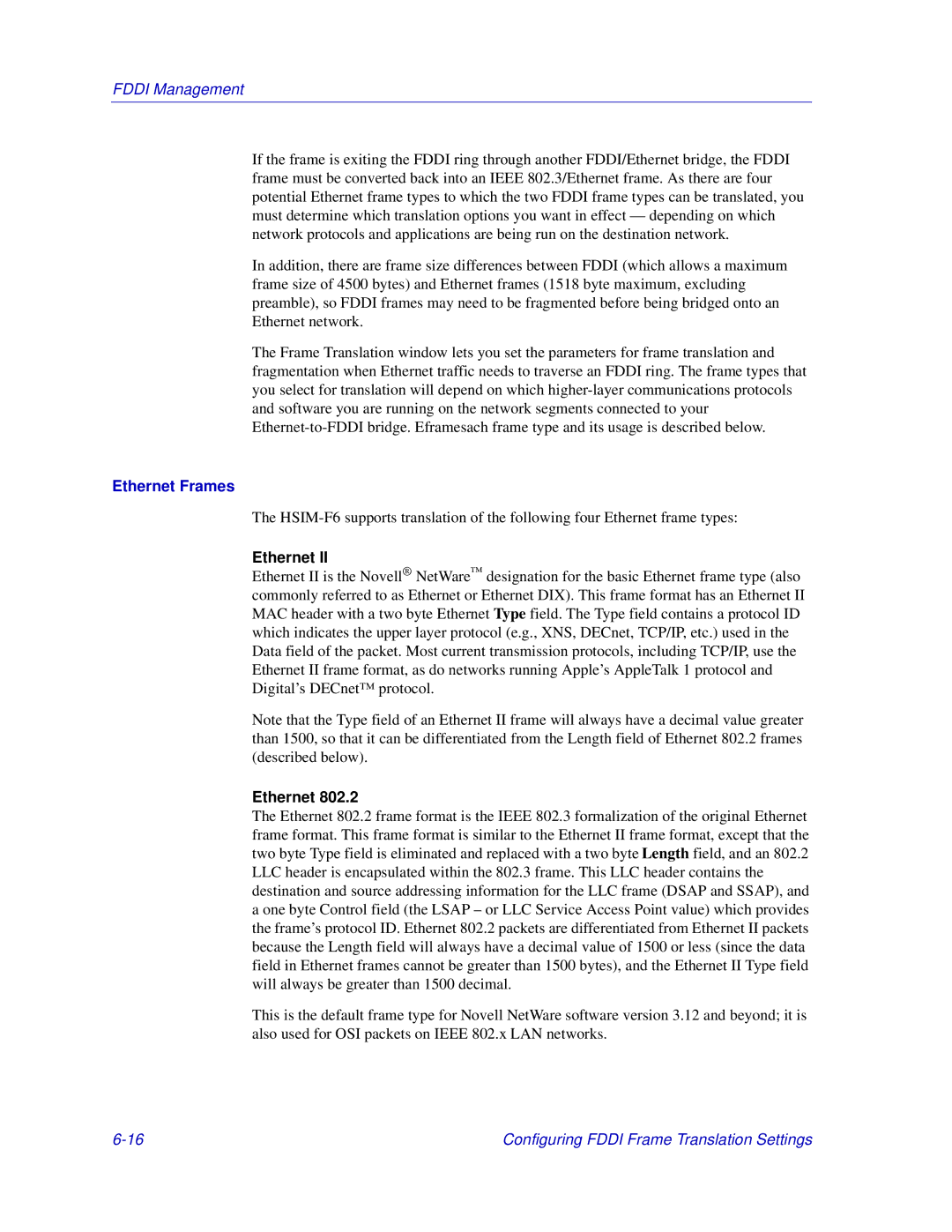FDDI Management
If the frame is exiting the FDDI ring through another FDDI/Ethernet bridge, the FDDI frame must be converted back into an IEEE 802.3/Ethernet frame. As there are four potential Ethernet frame types to which the two FDDI frame types can be translated, you must determine which translation options you want in effect — depending on which network protocols and applications are being run on the destination network.
In addition, there are frame size differences between FDDI (which allows a maximum frame size of 4500 bytes) and Ethernet frames (1518 byte maximum, excluding preamble), so FDDI frames may need to be fragmented before being bridged onto an Ethernet network.
The Frame Translation window lets you set the parameters for frame translation and fragmentation when Ethernet traffic needs to traverse an FDDI ring. The frame types that you select for translation will depend on which
Ethernet Frames
The
Ethernet II
Ethernet II is the Novell® NetWare™ designation for the basic Ethernet frame type (also commonly referred to as Ethernet or Ethernet DIX). This frame format has an Ethernet II MAC header with a two byte Ethernet Type field. The Type field contains a protocol ID which indicates the upper layer protocol (e.g., XNS, DECnet, TCP/IP, etc.) used in the Data field of the packet. Most current transmission protocols, including TCP/IP, use the Ethernet II frame format, as do networks running Apple’s AppleTalk 1 protocol and Digital’s DECnet™ protocol.
Note that the Type field of an Ethernet II frame will always have a decimal value greater than 1500, so that it can be differentiated from the Length field of Ethernet 802.2 frames (described below).
Ethernet 802.2
The Ethernet 802.2 frame format is the IEEE 802.3 formalization of the original Ethernet frame format. This frame format is similar to the Ethernet II frame format, except that the two byte Type field is eliminated and replaced with a two byte Length field, and an 802.2 LLC header is encapsulated within the 802.3 frame. This LLC header contains the destination and source addressing information for the LLC frame (DSAP and SSAP), and a one byte Control field (the LSAP – or LLC Service Access Point value) which provides the frame’s protocol ID. Ethernet 802.2 packets are differentiated from Ethernet II packets because the Length field will always have a decimal value of 1500 or less (since the data field in Ethernet frames cannot be greater than 1500 bytes), and the Ethernet II Type field will always be greater than 1500 decimal.
This is the default frame type for Novell NetWare software version 3.12 and beyond; it is also used for OSI packets on IEEE 802.x LAN networks.
Configuring FDDI Frame Translation Settings |
